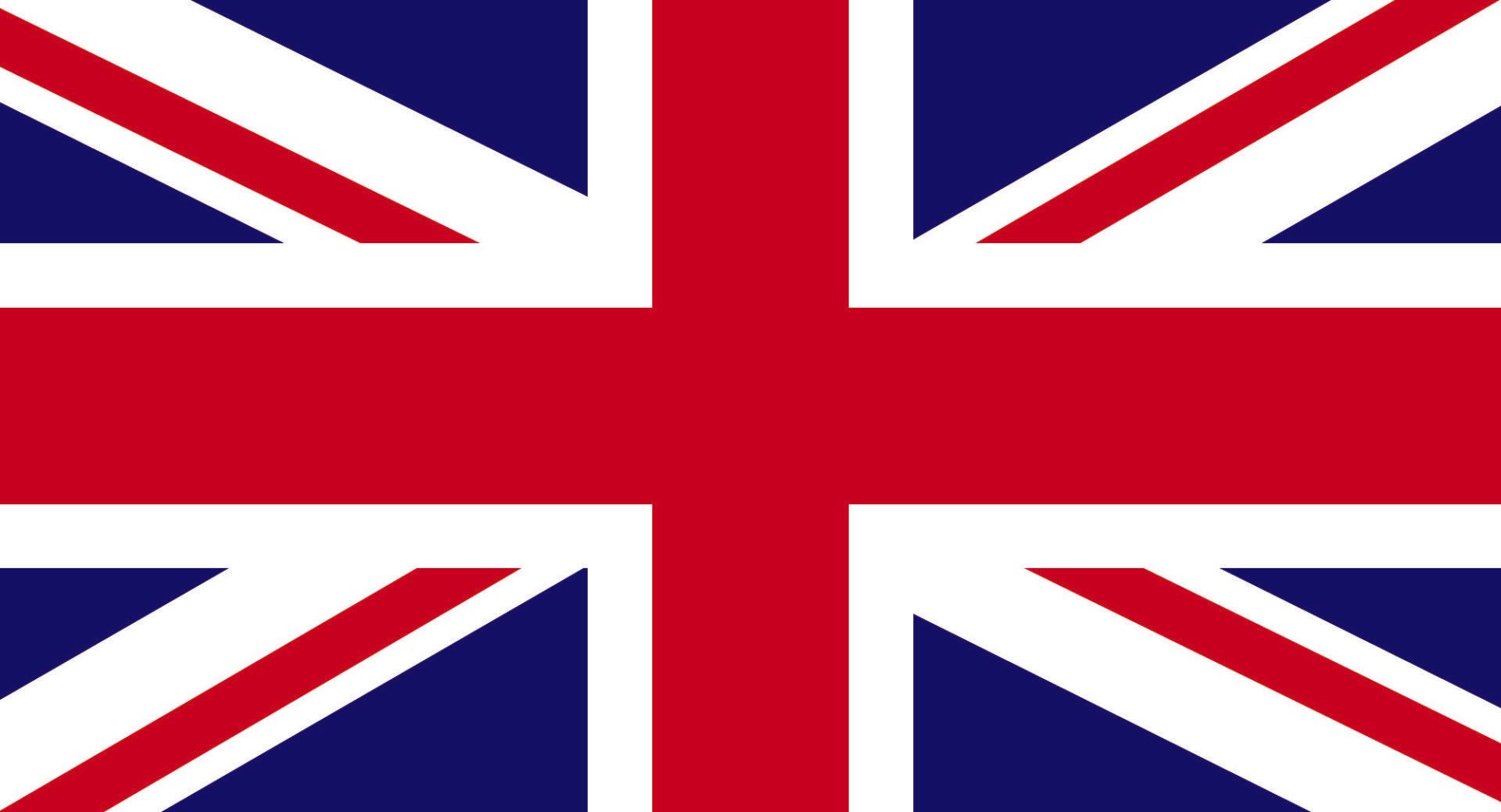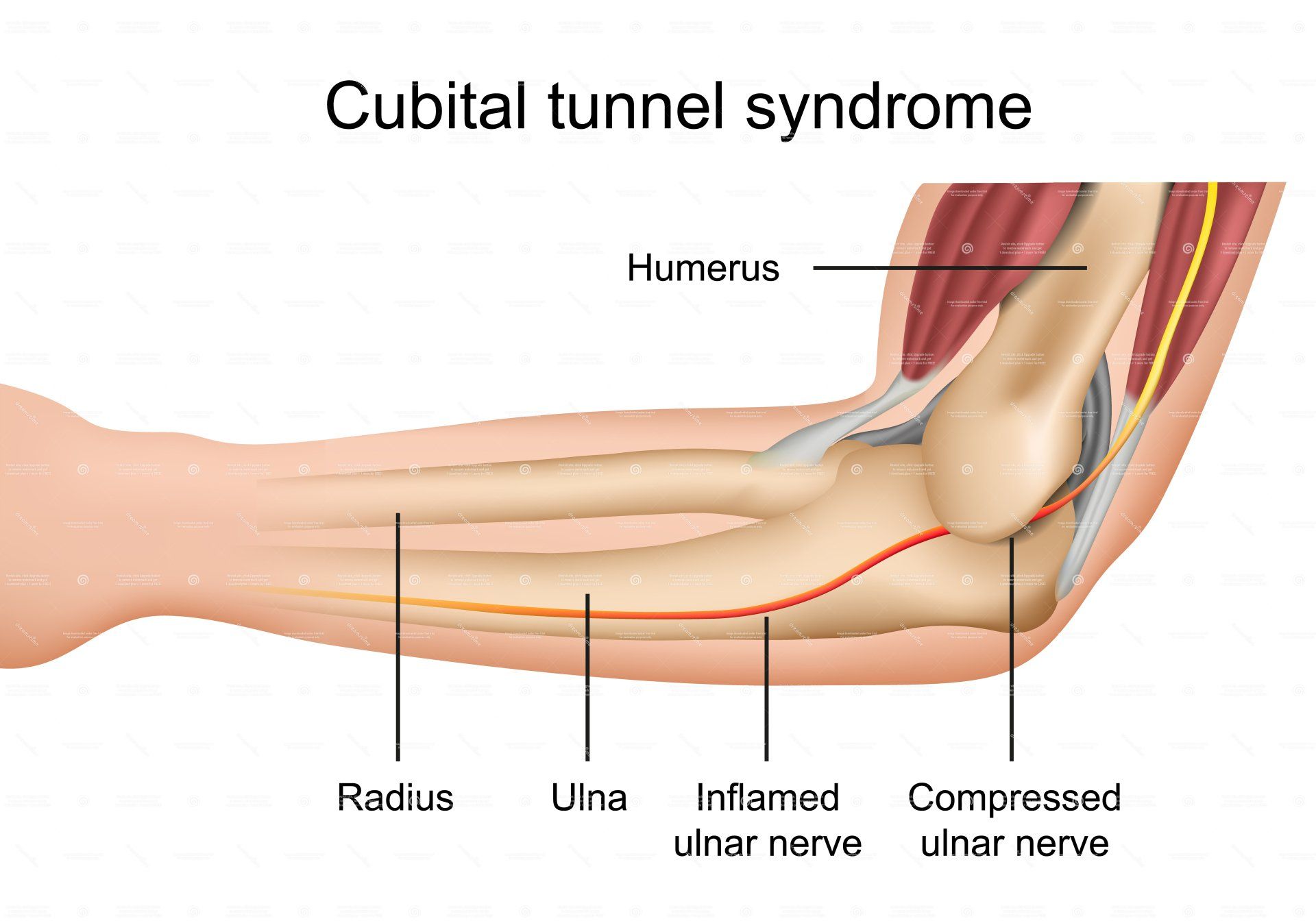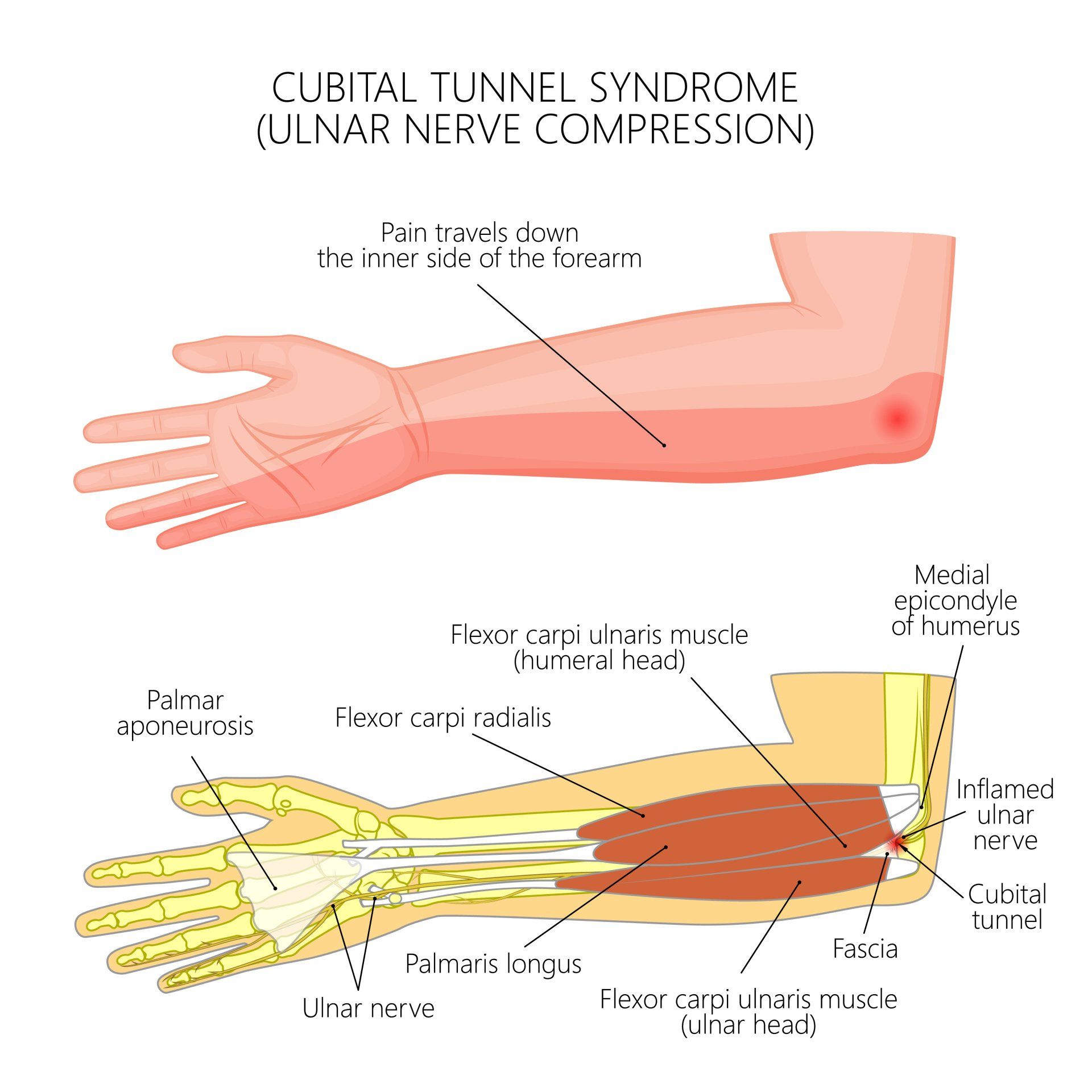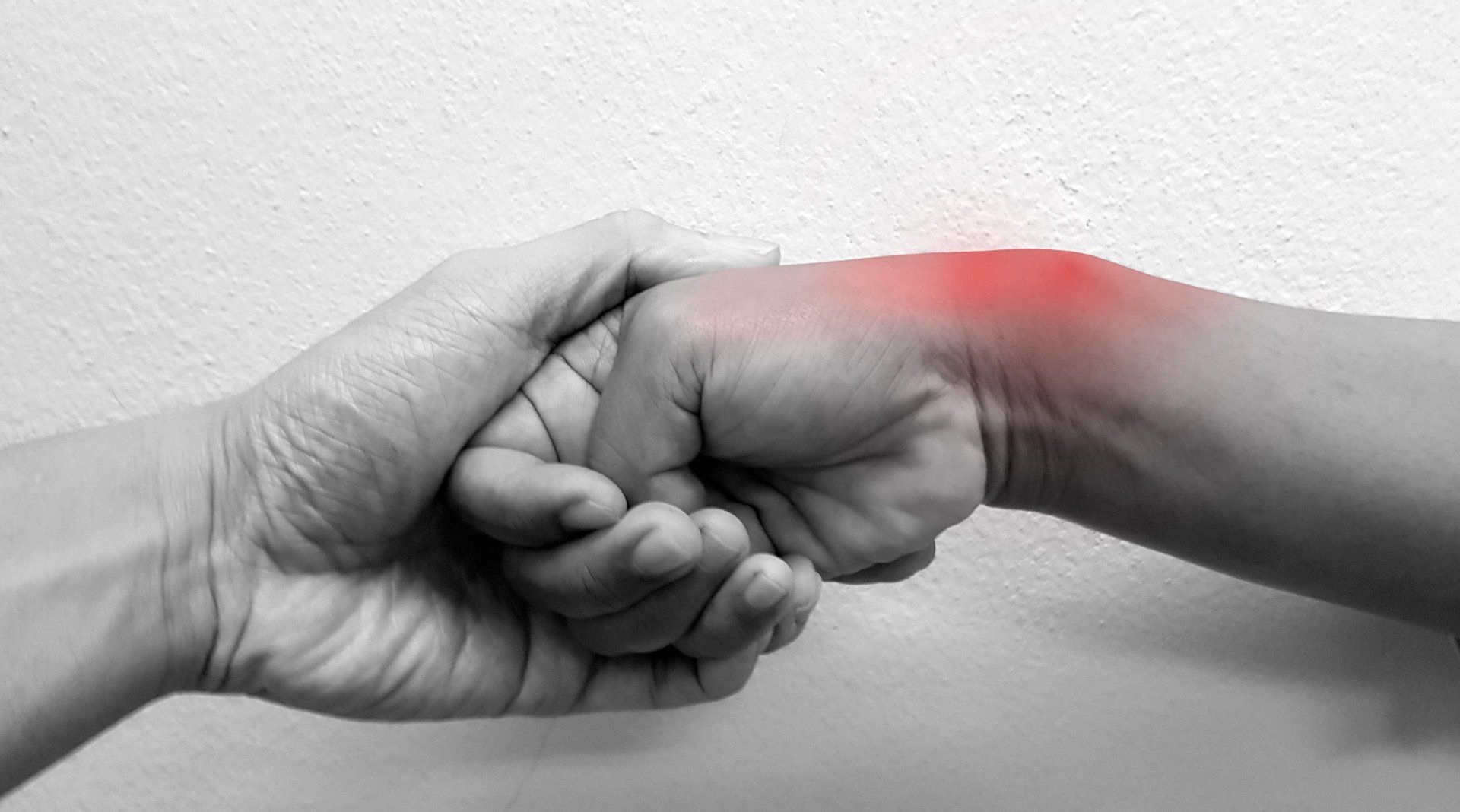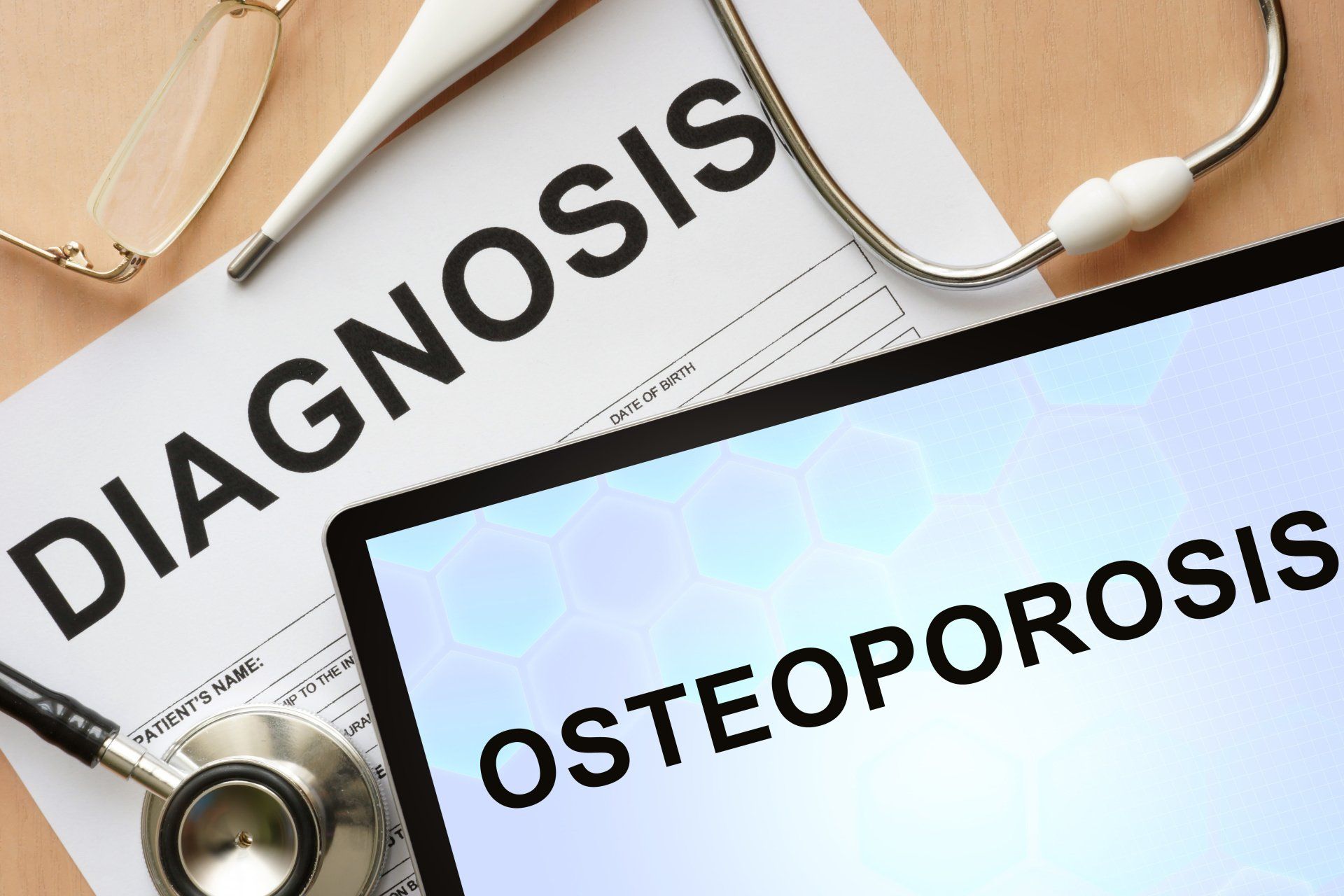Cubital Tunnel Syndrome
Introduction
- Cubital Tunnel Syndrome occurs when the ulnar nerve is compressed within a tunnel on the inner (medial) side of the elbow just behind the bony prominence of the inner aspect of the elbow called the medial epicondyle
- Cubital Tunnel Syndrome is the second most common cause of peripheral nerve compression:
- The most common one being carpal tunnel syndrome (compression of the median nerve at the wrist)
- The ulnar nerve is one of the three main nerves of the upper limb:
- The other two nerves of the upper limb are the median nerve and the radial nerve
- The ulnar nerve travels from the neck past the elbow and wrist and into the hand:
- Along the way it travels past some narrow areas where it can be constricted and cause symptoms for the patient
- The most common site of ulnar nerve compression is in the cubital tunnel at the elbow
- The second most common site is in Guyon’s canal in the hand
- When someone accidentally hits the inner side of the elbow (often termed hitting the funny bone) they get a sharp tingling sensation on the inner side of the elbow and forearm:
- This occurs because the ulnar nerve was hit at the site of the cubital tunnel where the nerve is close to the skin surface and therefore easily injured from outside forces
What is the cubital tunnel?
- The cubital tunnel is a space on the inner (medial) side of the elbow
- It lies between the medial epicondyle (bony prominence on the inner sider of the elbow) and the olecranon (the large bony prominence at the back of the elbow)
- The cubital tunnel is covered by the elbow joint capsule and the inner ligament called medial collateral ligament
Pathophysiology
- The cubital tunnel is a small space with not much room to allow for expansion in volume
- Any swelling in that vicinity will put pressure on the nerve and cause symptoms
- The ulnar nerve is close to the skin at the cubital tunnel and so prolonged direct pressure such as leaning on elbows or sudden trauma will injure the nerve
- The ulnar nerve is stretched when the elbow is bent and is less taught as the elbow straightens:
- Therefore, keeping the elbow bent for prolonged periods stretches the nerve and irritates it
- As a result of the ulnar nerve being stretched over inner bony prominence (medial epicondyle) it is irritated and injured causing initially changes in sensation and later the muscles that the nerve supplies are affected and atrophy
What is the function of the ulnar nerve?
- The function of the ulnar nerve is:
- Supplies sensation to the little and ring fingers
- Controls most of the muscles in the hand that provide fine movements
- Controls some of the muscles in the forearm that provide a strong grip
- These functions are therefore affected pending on the severity of the cubital tunnel syndrome
Symptoms
- Numbness and tingling of the little and ring fingers:
- This sensation can be intermittent such as when the elbow is bent for prolonged period in the middle of the night which is then relieved by straightening the elbow
- When more severe can lead to weak grip strength and poor finger coordination
- Muscle wasting in the hand occurs in even more severe cases and this is irreversible so it is important to seek medical attention if symptoms persist for more than 6 weeks
- Whilst most of the symptoms occur in the hand there can also be pain and tingling on the inner side of the elbow and forearm
Risk factors
- In many cases the cause is unknown
- Prolonged periods of elbow flexion (holding it bent) as occurs when sleeping or holding a mobile phone
- Sustained leaning on your elbows on hard surfaces such as desks or arm chairs when working or studying
- Previous fracture or dislocation of the elbow
- Swelling or cysts on the inner side of the elbow
- Bony spurs arising from arthritis in the elbow
- Sports or occupations that involve repetitive elbow motion such as throwing
Diagnosis
- History and examination are very suggestive of cubital tunnel syndrome
- Altered sensation in the ulnar nerve distribution which covers the palm and the palmar aspect of the little and ring fingers
- It is important to assess for sliding of the ulnar nerve during elbow flexion:
- For some people when they flex their elbows the ulnar nerve slides over and in front of the medial epicondyle and this repetitive movement can irritate the nerve
- Tinnel’s test:
- Tapping on the ulnar nerve over the inner elbow sends electric shocks down the fingers innervated by the ulnar nerve
- Elbow flexion test:
- Keeping the elbow bent for a minute reproduces numbness and tingling in the little and ring fingers
- It is important to rule out other causes of ulnar nerve entrapment such as:
- Spinal disc protrusion in the neck that is pressing on a nerve
- Thoracic outlet syndrome causing pressure on the brachial plexus
- Xrays:
- They can help rule out bony trauma or arthritis in the elbow
- Nerve conduction studies (NCS):
- It involves placing small electrodes on the skin and sending small electrical impulses that are then transmitted by the nerve being examined
- Provides a detailed analysis of how well a nerve is functioning by measuring how fast the electrical signal travels down the nerve
- The slower the speed the more damaged the nerve is
- They detect whether and to what degree the nerve has been damaged as well as helping to locate the site of nerve damage
- This will then help guide treatment
- Electromyography (EMG):
- This is similar to the nerve conduction studies but analyses the electrical activity produced by skeletal muscles
- Muscles contract in response to nerve stimuli from the brain
- EMGs measures how well the muscles respond to these nerve stimuli
- If muscle damage has occurred then the nerve compression is more severe
Treatment
- For most cases conservative treatment is effective
- This involves:
- Rest
- Avoiding provocative actions such as:
- Leaning elbows on hard surfaces
- Keeping the elbow bent for prolonged periods especially at night
- Wearing an elbow splint which minimizes elbow flexion:
- Wrapping a towel around the elbow at night is particularly effective at avoiding elbow flexion whilst sleeping
- Elbow splints that hold the elbow in 45 degrees of flexion have been shown to help
- Anti-inflammatory medication can help
- There is little evidence that physiotherapy or massage in the area improve symptoms
- Surgical intervention is recommended if:
- Conservative measures have not been effective over a period of time
- There is severe compression of the ulnar nerve
- Muscle weakness in the hand has occurred as a result of the nerve compression
- There are numerous types of surgical options available pending on the severity and cause for cubital tunnel including:
- Cubital tunnel release which releases the tissues that constrict the space around the nerve in the cubital tunnel and so reduces the pressure on the ulnar nerve
- This is very effective for mild and moderate cases
- Anterior transposition of the ulnar nerve involves moving the ulnar nerve in front of the inner bony prominence (medial epicondyle) and so it prevents it from rubbing against the bony part of the elbow and it is stretched less when the elbow bends
- Medial epicondylectomy involves removal of part of the inner bony prominence which reduces the pressure on the ulnar nerve when the elbow is bent
- These procedures are generally carried out as a day case with the patient able to go home the same day
- The outcomes of surgery are generally good for most cases but the outcomes are less good for severe cases especially when muscle wasting has occurred:
- It is therefore important to seek medical help soon if symptoms have persisted
Prevention
- Avoid activities that keep the elbow bent for prolonged periods
- If you work or study on a desk avoid:
- A low chair
- Resting the elbows on the armrest of a chair
- Do not lean the elbows on hard surfaces such as a desk, arm chair or arm rest of a car door
- When going to sleep wrap a towel gently around the elbow so as not to put pressure on the elbow which will help limit how far the elbow bends
Further helpful information can be found here on:
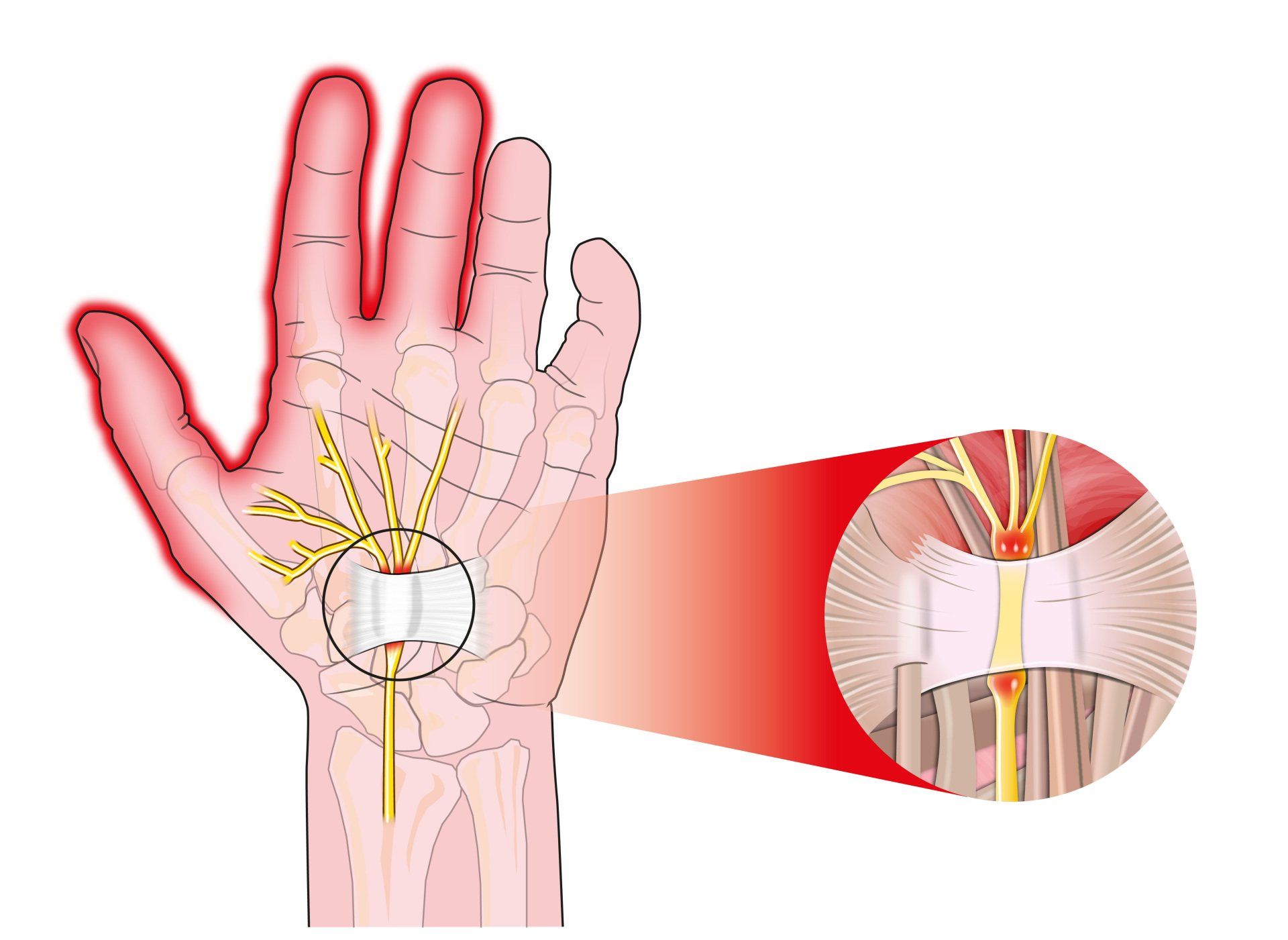
Introduction Carpal tunnel syndrome is a common condition that causes numbness, tingling and weakness in the hand specifically affecting the thumb, index and middle fingers: The little and ring fingers are not affected as they are supplied by another nerve called the ulnar nerve It is the commonest cause of peripheral nerve entrapment It is caused by compression of the median nerve as it passes from the forearm into the hand through a passage called carpal (i.e. wrist) tunnel The median nerve is one of three main nerves that supply the upper limb: The other two nerves are the ulnar nerve and the radial nerve
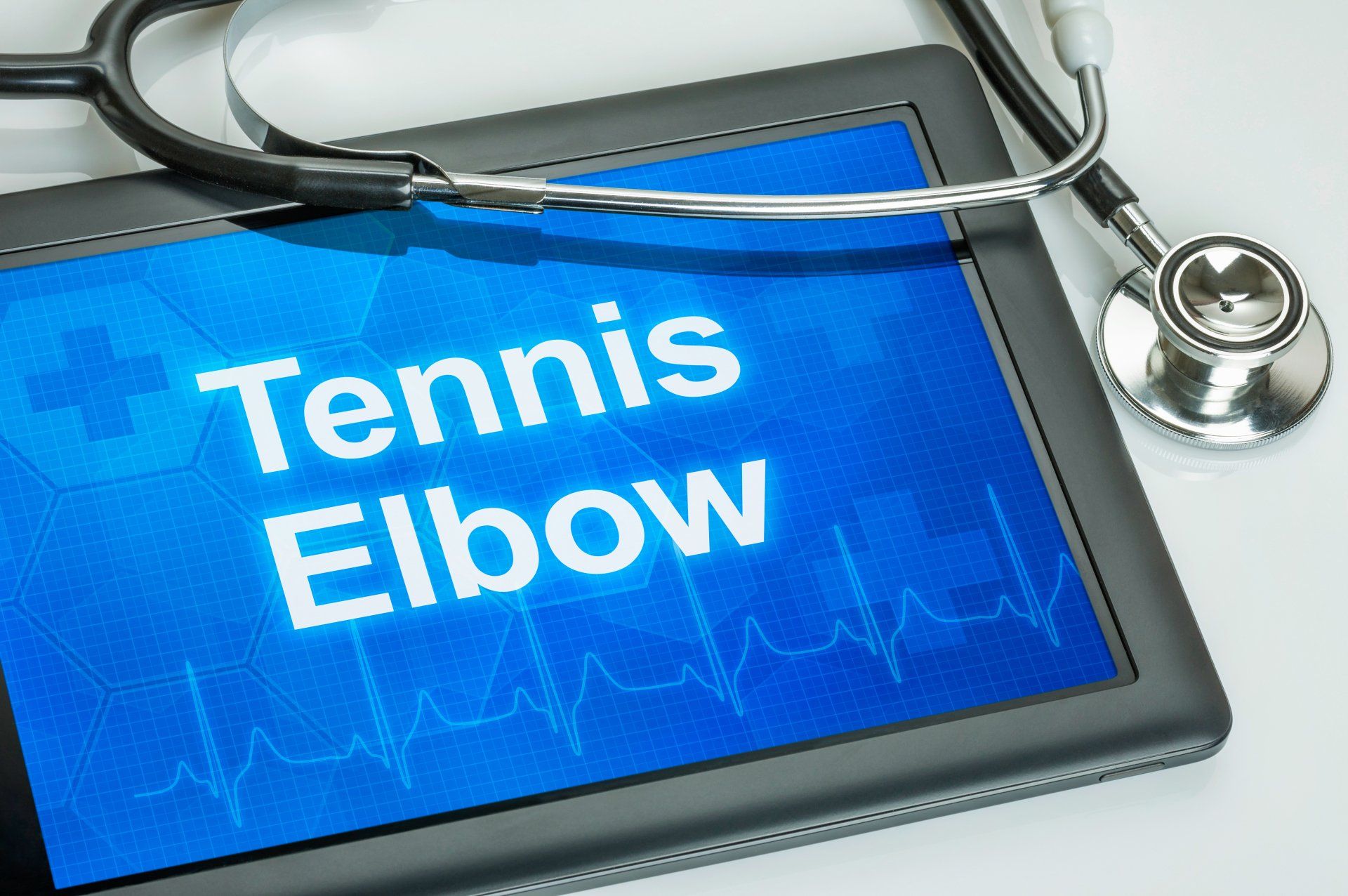
Introduction Tennis elbow (also known as lateral epicondylitis) is an overuse injury of the forearm tendons that originate over the lateral epicondyle of the humerus (bony prominence on the outside of the elbow) and act to bring the wrist backward away from the palm Whilst tennis players are particular prone to this condition it does not occur exclusively to them

Introduction This term is also known as repetitive motion or stress injury and occurs as a result of carrying out the same motion repeatedly over time causing injury to muscles and tendons It is associated with repetitive tasks, sustained or awkward position, forceful exertion, vibration or compressive forces It can affect almost any joint in the body Most commonly affected areas are hands, wrists, shoulders and neck It is thought to affect 5-10% of the general population but can be as high as 20-40% in specific working populations
